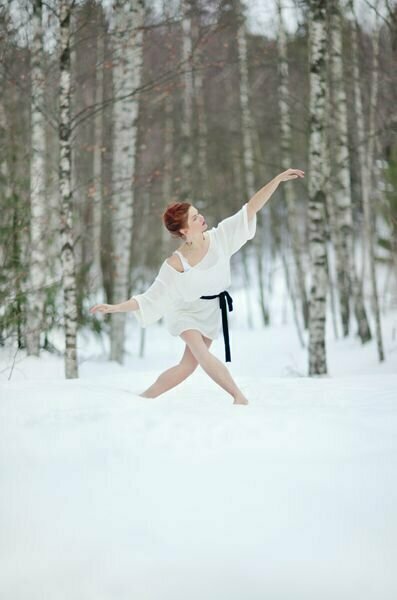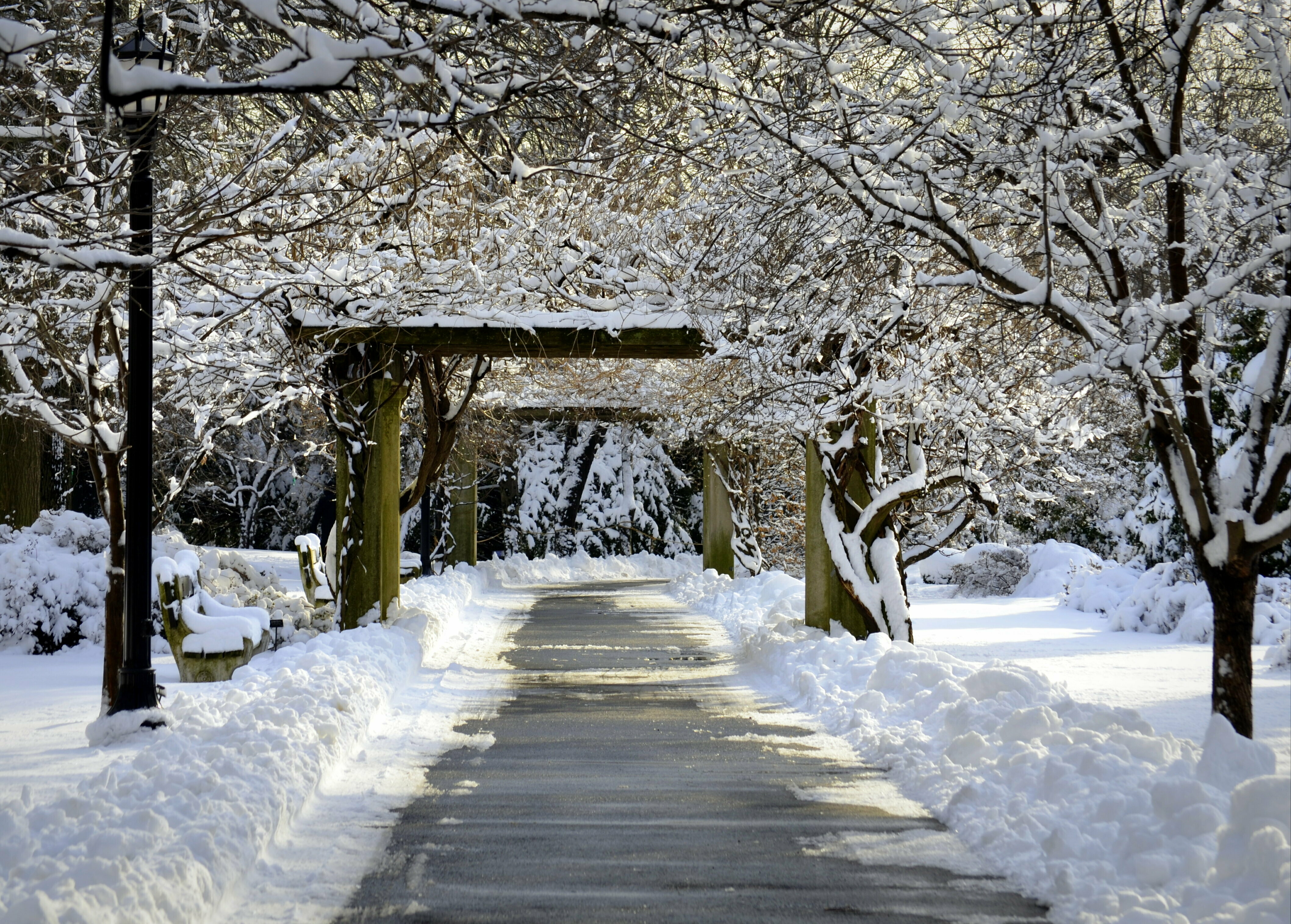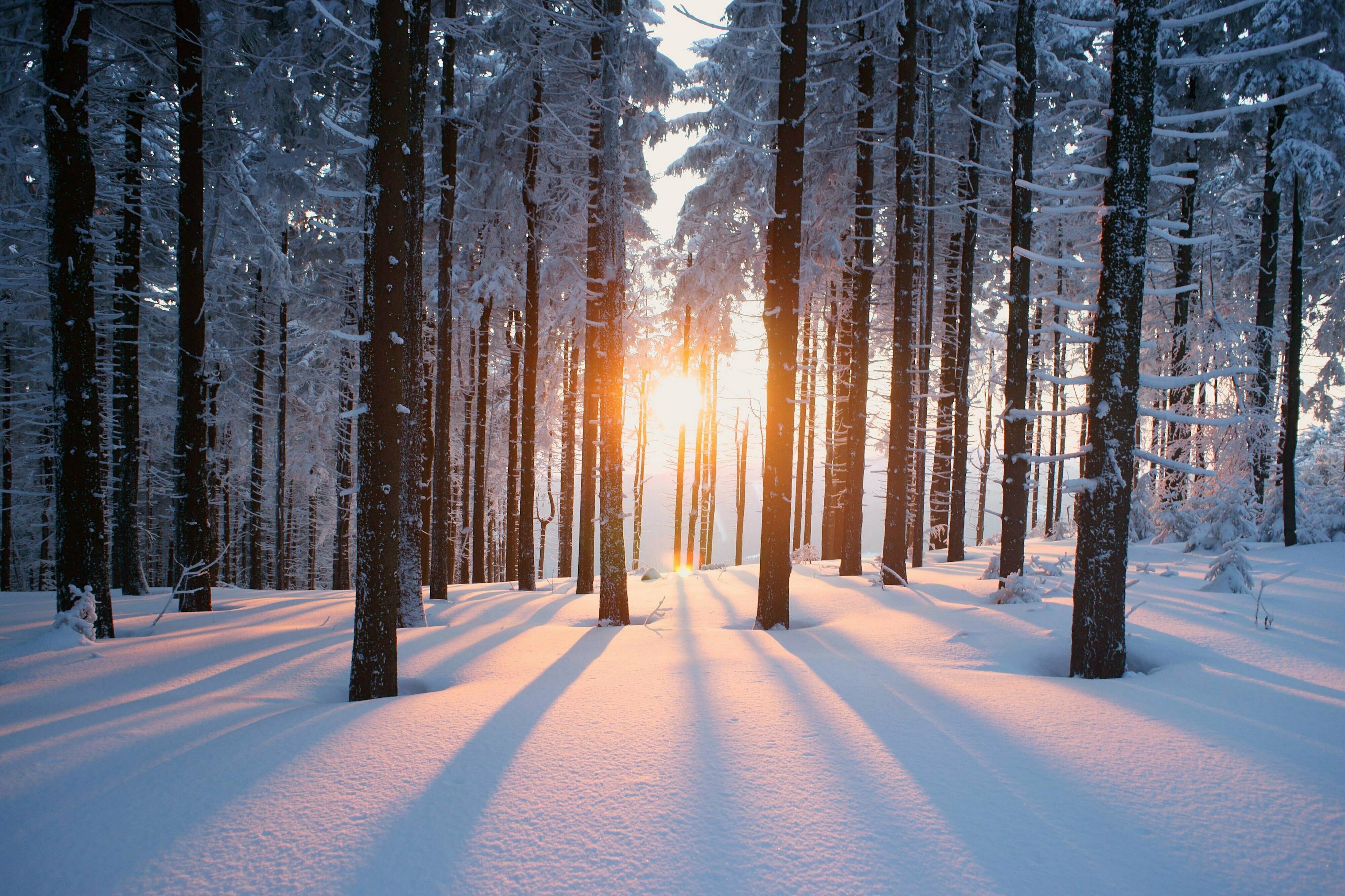What’s your vision of winter? Cold, snow everywhere, or simply a more temperate time of year? Is it crisp days that make your nose crinkle or soft sunshine and no air-conditioning? No matter what kind of winter you have, there’s music to fit your mood.

Dancing in the snow
Tchaikovsky, stuck in the coldest north, created his first symphony on an idea that could accommodate both a cold and a warm season, his Winter Daydreams. The slow Adagio movement could be you sitting by the fire, curled into a blanket, or in a nice swaying rocker.
Pyotr Il’yich Tchaikovsky: Symphony No. 1 in G minor, Op. 13 – “Winter Daydreams”: II. Adagio cantabile ma non tanto (Polish National Radio Symphony Orchestra; Adrian Leaper, cond.)

Brooklyn Botanical Garden in Winter
In the inverted summer/winter of Argentina, Piazzolla, in his Four Seasons of Buenos Aires, gave us a winter scene with dancing.
Astor Piazzolla: Las 4 Estaciones porteñas (The Four Seasons) – IV. Invierno Porteño (Massanori Kobiki, piano; Toulouse National Chamber Orchestra; Alain Moglia, cond.)
In England, Christopher Simpson’s Winter part of his four Fantasia Suites for viols, also takes us dancing.
Christopher Simpson:4 Fantasia-Suites, “The Four Seasons” No. 4. Winter – III. Galliard (Sophie Watillon, viol; Friederike Heumann, viol; Brian Franklin, viol; Matthias Spaeter, theorbo; Luca Guglielmi, harpsichord/organ)
Russian composers, however seem to be the ones who take us into the wrenching cold. As the chorus sings, the snow piles higher and higher.

Snow falling
Georgy Vasil’yevich Sviridov: Sneg idyot (Snow is Falling): Snow is Falling (Rimsky-Korsakov College of Music Female Choir; St. Petersburg Radio and Television Children’s Choir; St. Petersburg State Symphony Orchestra; Yuri Serov, cond.)
Leonid Desyatnikov closes his 12 months of the Russian Seasons with a look back at the year.
It’s cold, but we’re inside and we can remember the year as it was.
Leonid Desyatnikov: Russian Seasons – Winter: III. Posledniaya (Closing Song) (Julia Korpatchova, soprano; Gidon Kremer, violin/cond.; Kremerata Baltica)
Sergei Prokofiev’s ballet Cinderella included a Winter Fairy – one of the 4 season fairies who came to help Cinderella’s fairy godmother prepare her for the ball.
Sergei Prokofiev: Cinderella, Op. 87, Act I: The Winter Fairy (arr. M. Rostal for violin and piano) (Jenny Abel, violin; Maria Bergmann, piano)
In his Children’s Corner Suite, even Claude Debussy included a work for the snow. As it falls, it seems to mesmerize the watcher – the light colour against the darkness of night and never stopping.

Sunset against the trees
Claude Debussy: Children’s Corner – IV. The Snow is Dancing (François-Joël Thiollier, piano)
British composer Thomas Adès set a set of 4 Latin songs as The Lover in Winter for countertenor and piano. Again, he’s able to invoke a cold feeling.
Thomas Adès: The Lover in Winter – No. 1. Iam nocet frigus teneris (Robin Blaze, counter-tenor; Huw Watkins, piano)
But perhaps we should close as we started, with a bit of Tchaikovsky. His famous ballet The Nutcracker remains for many people the definition of the winter season. It’s Overture, seeming to mix both the falling snow and the scurrying people preparing for the season captures so much of winter.
For more of the best in classical music, sign up to our E-Newsletter
Pyotr Il’yich Tchaikovsky: The Nutcracker – Act I: Overture (Slovak Radio Symphony Orchestra; Ondrej Lenárd, cond.)



